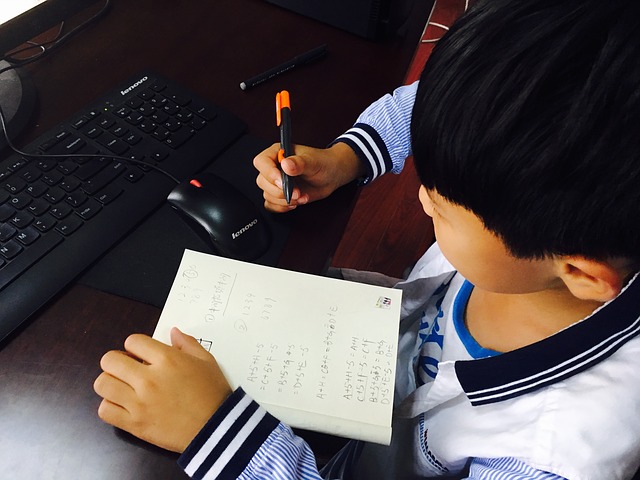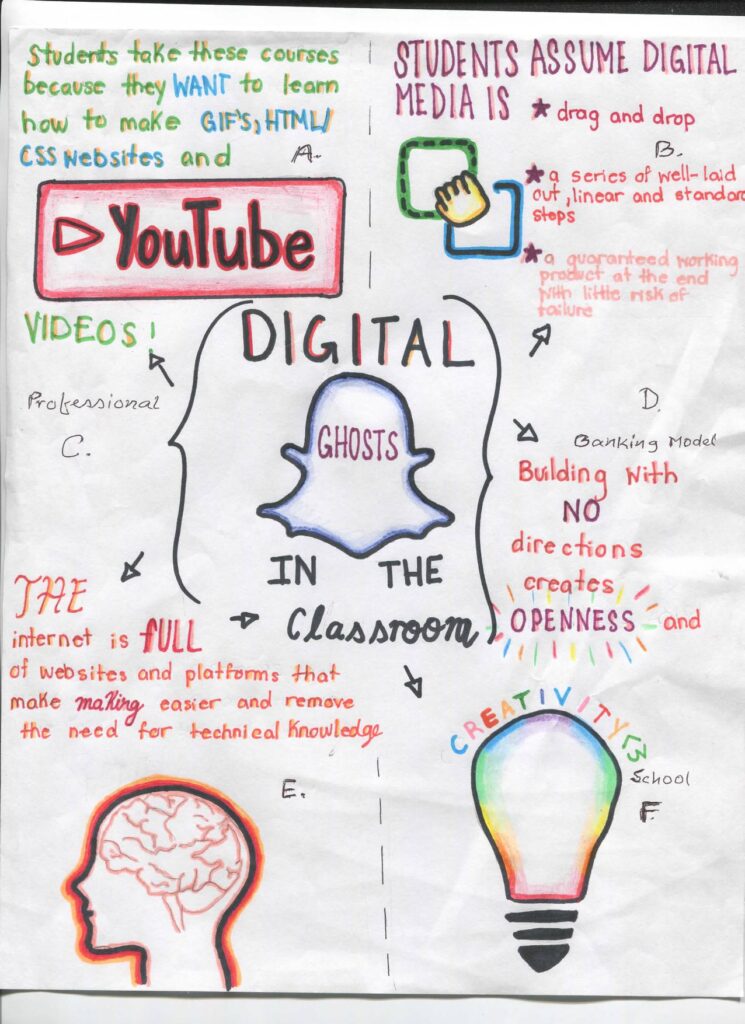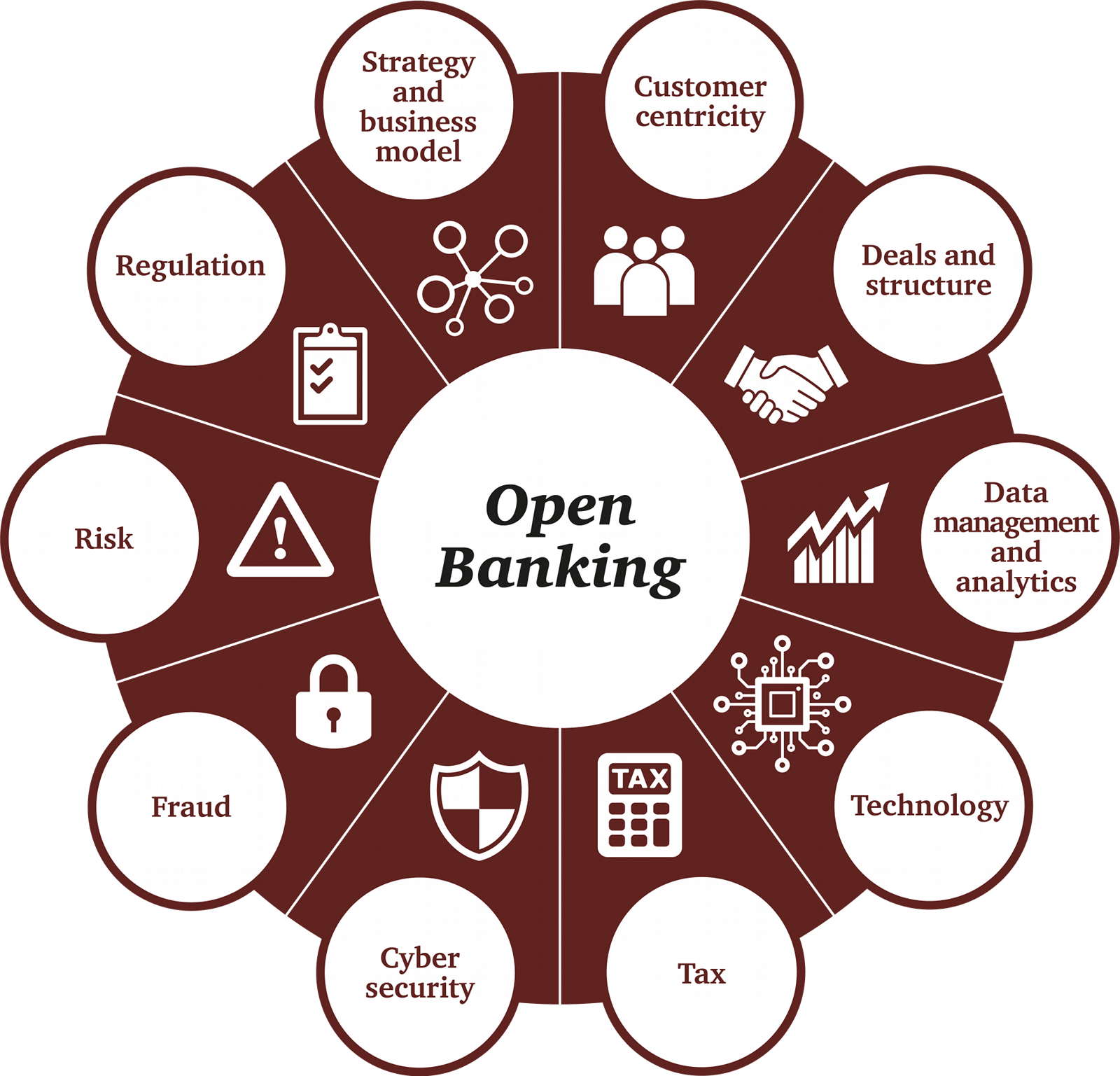I would like to inform you that I did study the article “Digital Ghosts in the class room” by Ashley Hinck. I made a sketch note with key points.
This article describes on the lack of creativity coming from students when it comes to Digital Pedagogy due to how they are taught in the school system. It talks about the fact that students are so afraid of failure, that they will not try something new or more challenging. For this assignment, I planned to carry out a sketch note. I would like to challenge myself. I usually stay away from anything pertaining to art, but I wanted to try something new. I carried out this assignment on banking concept for financial information, knowledge of technology as a platform to update for internet and relative websites information. Creative school and traditional cultures had significant impact on digital ghost ideas.

The first topic I would like to add was the activities of GIF, HTMW and the process of using CSS websites, videos etc. The Article explains how students always think to do the assignment that will be less creative, but will give the teacher what they want. Students are taught throughout their education that doing simple drag and drop tasks will get you the top marks. I updated the logos of YouTube and Canva. Ashley Hinck goes into detail about how Canva, YouTube and Facebook work together to bring the users a easy drag and drop experience. This helps people put aside their creative side and take part in a simple user experience that these platforms use.

The next topics I visited were the degree of digital media applications, the idea of books and electronics as Hinck calls it, and the importance of trial and error. The concepts that people have so much potential when they use more complex applications, instead of drag and drop apps that they usually use. “The New Worksheet” idea looks at how the basic digital projects that students know well, is like giving out an old fashion worksheet. Like a worksheet, there is no creativity in a linear digital project. I put trial and error because the article expresses the important process of trying, failing and getting it just right. We can not trial and error as world having a lot of different applications.

The professional ideas and banking model topics I tackled on my sketch note were the examples of the lego, the linear and ethical thinking of digital projects in education, and the idea that we are all makers, creators, and speakers. The article uses the example of a lego to explain what kind of digital projects we should be doing in the classroom. Building legos with no instructions allows us to be open, creative and have agency. The article says these things should be in all digital projects throughout our schooling. The author feels that digital projects in traditional school culture only provide a linear approach to thinking, instead of being open, creative, and having agency. The article also tells that teachers should be giving students the tools to be makers, creators, technologist and speakers. Instead of linear projects, there should be more complex projects that allow students to reach their potential.

Thinking a sketch note helped me to put the information from this article into action. I carried out of my comfort zone and tried something I was not comfortable with. It allowed me to try some trial and error creating this artifact. It did not turn out exactly how I wanted it, but I will keep trying to perfect it throughout time. This article provided me with a lot of information that I will take with me into my classroom. I will add some creative digital projects that will allow my students to use their creativity. I will try to give my students the tools they need to become makers, creators, and speakers. I will also help to increase my Digital Pedagogy. Multi-media had a series of product based influences for personal risk and that market was natural. YouTube, Videos, GIF, HTMW, CSS were the updated applications to get information as social media. Finally, professional knowledge could incorporate all of those ideas in practical aspects of school creativity.








